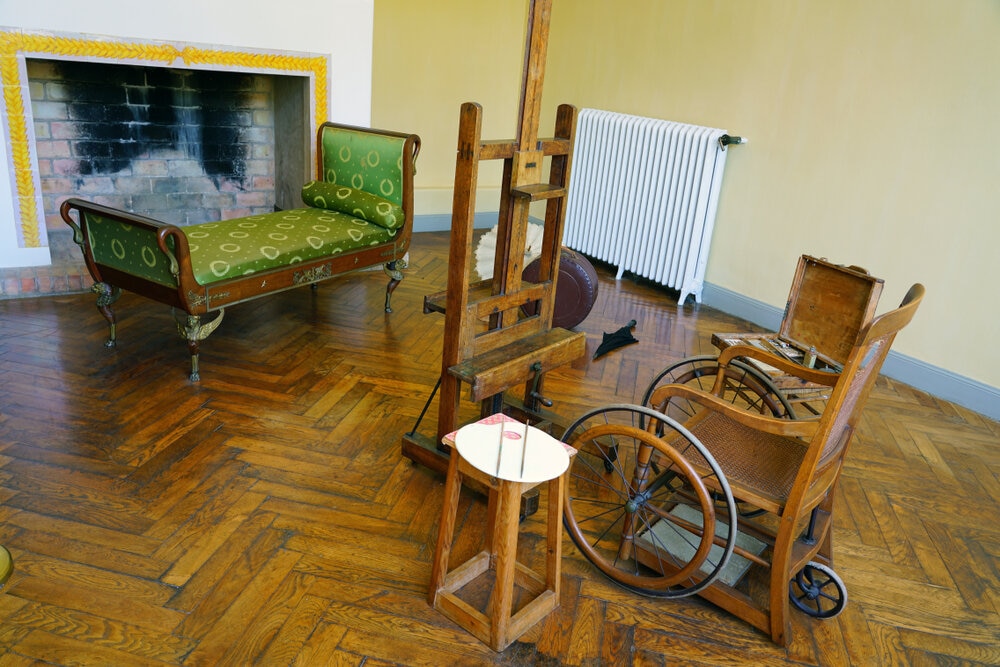

Auguste Renoir in Cagnes-sur-Mer
Weakened by a lung disease, it was in 1903 that the great impressionist painter settled in the Alpes-Maritimes, seduced by the warm Provencal light. 4 years later he acquires the Domaine des Collettes (photo above) where he will live until his death. Transformed into a museum in the 60's, this neo-Provencal style house designed according to his wishes will inspire him with shimmering landscapes, some of which can be seen on site: in addition to moving intimate archives, the museum has a collection of 16 original paintings and 30 sculptures.
Jean Cocteau in Milly-la-Forêt
In a 2-hectare estate with gardens, orchard and wooded park, the "bailiff's house" is located in the south-east of Essonne where, far from the bustle of Paris, the multidisciplinary artist (playwright, poet, graphic designer, filmmaker...) settled in 1947. He gave free rein to his creativity even in the decoration: leopard wallpaper, furniture of all types and periods, extravagant canopies ...
This former 18th century mansion with a Louis XIII style is today a living testimony of the one who will join the French Academy in 1955.
Jacques Prévert in Omonville-la-Petite
Fitted out by a friend, a movie set designer, and surrounded by remarkable landscapes, this house where the artist lived the last seven years of his life is located near Cap de la Hague in the English Channel. It was in the 1930s that the poet, who became popular thanks to his colloquial language and his play on words, fell under the spell of this "corner of paradise", but he did not buy this friendly house until 1970. Opened to the public in 1995, it well restores the atmosphere of what was once a discreet refuge for him, his family and their friends.
Chateaubriand in Châtenay-Malabry
It was in this house in the Hauts-de-Seine that one of the precursors of French Romanticism wrote most of the famous "Memoirs from beyond the grave". From 1807 to 1818, he laid out the estate and created the Vallée-aux-Loups park covering 14 hectares. Even if he had to part with it 2 years after losing his ministerial status, the place still preserves many documents on the writer as well as period furniture.
Maurice Ravel in Montfort-l'Amaury
One could imagine that the incredible worldwide success of the Boléro would have endowed its author with a large luxurious home, but no, it was in a modest house in the Yvelines that he spent the last 16 years of his life. Situated near the Rambouillet forest, which the composer could see from his home, it was where most of his works were born and where he kept his piano as well as many unusual objects that belonged to him. The small house imposes visits divided into small groups, but don't let this deter you, the discovery is worth the effort.
Valérie from Comme des Français
---
Discover other artistic places worth to be known :
- The magnificent Caillebotte property
- The Mecca of George Sand's intellectual life
- Josephine Baker's castle